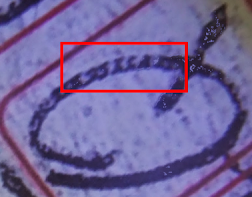Concealment Methods
The Music Code
For those who are aware of the term please bear with me whilst I provide a brief description. Tradecraft is an assembly of all known techniques, methods and equipment in common use by the espionage fraternity. In recent times the Director of the CIA Museum at Langley, Virginia, Toni Hiley stated that 'There is no method or technique too old not to be considered for use in today's world of espionage'.
And old it most certainly is. Since time immemorial, people have found ways to conceal messages. In fact not only messages but other items including explosives and weapons. Disguise might be a better word.
 The first known examples go back to 3500 BC and the tiny Cuneiform tablets that the Mesopotamians used as a message carrier, they inscribed their messages on to the small square shaped clay pieces that would fit in the palm of your hand and pass them around. It didn't take long apparently before they realised they could melt wax over the tablet and thus hide their messages.
The first known examples go back to 3500 BC and the tiny Cuneiform tablets that the Mesopotamians used as a message carrier, they inscribed their messages on to the small square shaped clay pieces that would fit in the palm of your hand and pass them around. It didn't take long apparently before they realised they could melt wax over the tablet and thus hide their messages.I digress, this post is about a particular concealment method, the one you see in the image at the top of the page. A Music Code. You have probably heard of audible music codes, the most famous of which would be Beethoven's 5th Symphony which was one of the coded messages alerting the French that the invasion was imminent. There are other examples where notes were altered or different instruments were used, this one as you see makes use of sheet music but written to conceal messages. It came from WW1 and was in use by German intelligence services who were also the first to hide messages in dress patterns. This music code is self-explanatory, particular notes can be directly interpreted into letters. Consider what they did, they used an everyday piece of sheet music, they found a simple way to convert musical notes to letters and passed the messages on either audibly or in sheet music. Now think about how the message would be known to the recipient, it would have no meaning unless you were aware of how to decode it especially if it had been double encoded.
 Where it can become complex is when the code, when deciphered, produces a string of a jumble of letters which seem to make no sense. In fact, I recall not that long ago when I shared an Alice Dubois method of hidden micro written code behind a postage stamp with Nick Pelling. The code was a pig pen code which at the time it was written, WW1, was state of the art. Not so now of course. Well, Nick had a look at it and said that it was just a string of letters when deciphered. Maybe so but even in those days, they would double encrypt their messages so the string of letters could well have been another layer of code. A trap for the inexperienced and a good lesson.
Where it can become complex is when the code, when deciphered, produces a string of a jumble of letters which seem to make no sense. In fact, I recall not that long ago when I shared an Alice Dubois method of hidden micro written code behind a postage stamp with Nick Pelling. The code was a pig pen code which at the time it was written, WW1, was state of the art. Not so now of course. Well, Nick had a look at it and said that it was just a string of letters when deciphered. Maybe so but even in those days, they would double encrypt their messages so the string of letters could well have been another layer of code. A trap for the inexperienced and a good lesson.In this game of espionage, you have to think outside the 9 dots and nothing is ever as it seems
There are many more most interesting examples of sending hidden or clandestine messages and I will post more in the coming weeks.
Amongst them will be the use of a harmless empty can of beans, the dear old lady sitting gazing out of her window across a railway marshalling yard and leaning on her walking stick, the identity card and its photograph and many more. The common thread is that all the messages and communications were hidden in plain sight and all made use of everyday items.
I hope you enjoyed this first post on this topic, your thoughts, ideas, opinions and questions are very welcome so please submit a comment!








In this 2016 post, the issue of double encoding was touched upon. The technique was to first encode a text and then take that output and encode it again. This occurred apparently in and between both world wars. To the unaware the output may have been nothing but a jumble of letters that perhaps were sometimes spiced with a few tempting morsels.
ReplyDeleteA one time director of the Bletchley Park museum made reference to it in a video clip. I will try and find that and post it.
The reason I mention double encoding now is related to the torn piece which at first was detected as a ‘morbit’ cipher but more recently it tested as a Nihilist cipher. Could this message have been double encoded? I don’t have the answer to that question and that is why I am hoping to get the input of a cryptanalyst.